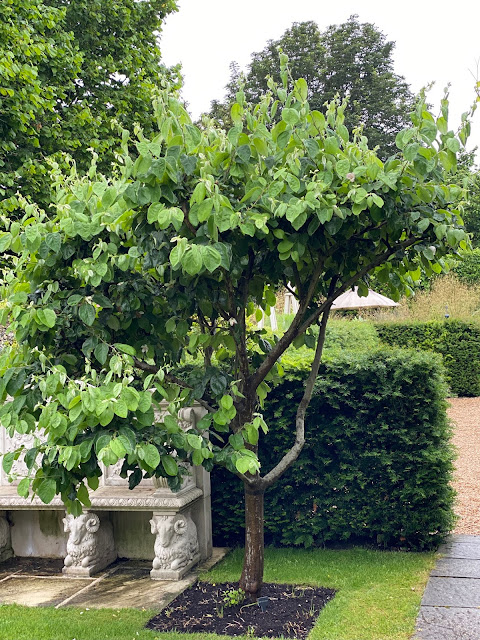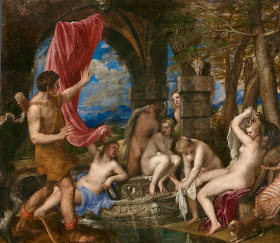 |
| The Orchard at Old Swan House |
When I planted up the garden in 2014 my first order was of six fruit trees from Blackmoor Nurseries, Selborne to create an orchard where the vegetable garden had been. The trees were then planted in memory of particularly close friends, and each has a slate label at their base with their name and dates on. They are (with links to their eulogies):
 |
| Cherry 'Czar' - Nick Duke |
Nick Duke (1945 - 2013) - a Czar cherry in the lower left next to the old Victoria plum.
 |
| James Grieve apple (Venky) |
S. Venkitsewaran (Venky) (1941 - 2013) - a James Grieve apple on 'Venky's terrace'
 |
| Greengage St Julien (Jo Johns) |
Jo Johns (1939 - 2014) - a St Julien Reine Claude greengage opposite Venky's terrace'
 |
| Mirabelle plum (Lucie Skipwith) |
 |
| Sunburst cherry (Annie May) |
Annie May 1944 - 2014) - a Sunburst cherry next to the old damson
 |
| A Conference Pear (Nicky Boyle) |
Nicky Boyle closest to the garage and drive
In addition to the fruit trees in the orchard there are two roses:
Sally Wilson-Young / Macpherson (1940 - 2012) - a Mme Alfred Carriere rose planted on the eastern wall
 |
| Rose Banksii alba (Kate O'Brian) |

















